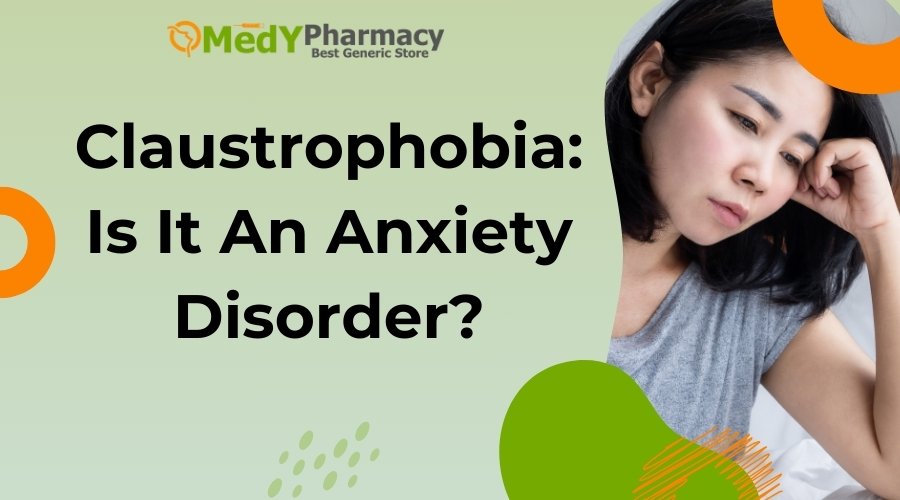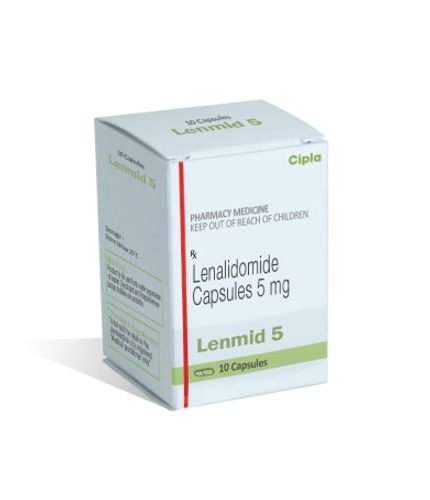Introduction:
Many fears are frequently prone to the human psyche. Fear of things like water, heights, insects, and so on can cause our minds to act strangely in these situations.
One such mental phobia that we will discuss in this post is Claustrophobia. The terror of being in a small, narrow area is what your mind perceives it to be, to put it simply.
Specific phobias are a type of anxiety disorder when a person has a strong, unreasonable dread of particular things or circumstances. A prevalent phobia is claustrophobia, which is the fear of enclosed environments. Someone with claustrophobia could become anxious in a crowded room, elevator, airplane, or other small space.
An individual with this may experience panic attacks in crowded areas, elevators, airplanes, and other enclosed settings.
Whatever the phobia, this can be conquered with the right care.
What Is Claustrophobia?
This is a severe phobia of small, enclosed areas.
A lot of concerns sound logical. Avoiding uncomfortable situations is something we all attempt to do. Excessive and illogical fear of one or more objects or circumstances is what distinguishes a phobia from a fear. Additionally, when you have a phobia, your level of anxiety is not proportional to the real threat that the feared circumstance or thing poses.
When a phobia makes it difficult for you to do daily tasks, it becomes a health problem. Phobias can lower your self-esteem, disrupt your relationships, and make it harder for you to work effectively.
It has occasionally been seen that people would exhibit strange attitudes and a feeling of terror in a small, cramped area, as we previously mentioned.
The indication is most noticeable in persons entering a limited place at different times.
For instance, individuals exhibit a different mindset and a great deal of terror when they go through tunnels, elevators, tiny automobiles, caverns, jail cellars, small spaces like the attic, and so forth.
Research indicates that when a person of this sort is placed in a small area, their mind produces this fear.
What Circumstances May Cause Claustrophobia?
- Tunnels
- Lift
- Trains
- Aircraft
- Little Vehicles
- Caves
- An MRI Scanner
- Cellars
Little Spaces with either No Windows or Windows That Are Inoperable. Ideas of Being in a Small Area.
What Is The Experience Of Claustrophobia Like?
When you have claustrophobia, you experience anxiety when you’re in a small or tight environment. Your ability to focus and function may be affected. Your mind can be racing with images of being in a small area. You might stay up at night thinking.
How Widespread Is Claustrophobia?
The prevalence of this is approximately 12.5% of people. The typical individual who suffers from a particular phobia, like claustrophobia, is afraid of three things or circumstances. Seventy-five percent of persons who have a specific phobia are afraid of multiple things or circumstances.
By Whom Is Claustrophobia Cured?
While certain phobias can strike anyone at any age, the majority of them start in childhood and adolescence.
Claustrophobia Can Be Triggered By What Circumstances?
Generally speaking, these feelings can be caused in enclosed spaces or situations where people feel confined.
- Being in busy areas
- Strolling through a tunnel
- Traveling by train or plane
- Being in elevators
- Toilets in public
- Spaces where windows or doors are locked
How Does Claustrophobia Affect Day-To-Day Existence?
Because claustrophobia tends to make people avoid anxious situations or places, it can significantly affect a person’s day-to-day existence. Here are a few ways that this affects day-to-day living:
When faced with conditions that make them anxious, those who suffer from this may take extreme measures to avoid them. This can involve avoiding limited spaces that impede their capacity to perform essential tasks, such as elevators, crowded rooms, public transit, tunnels, and any other setting.
They might also refrain from accepting positions requiring a lot of flying or elevator use.
Their physical health may suffer as a result of ongoing stress and worry brought on by claustrophobia.
It lowers a person’s overall quality of life by limiting their access to different settings and circumstances.
What Is It Like To Be A Person With Claustrophobia?
Are you someone who suffers from this kind of fear? If the answer is yes, you are fully aware of the symptoms that may appear in such circumstances. Otherwise, understanding how a phobia’s mind would function in certain circumstances is crucial.
You see, someone who has claustrophobia will act nervous. This is the first indication that appears.
- Uncomfortable
- Palpitations
- Breathing difficulties or trouble breathing
- Quicker heartbeat
- Excessive sweating
- Sobbing or yelling for assistance
- Feeling anxious
- Delusions
- Dizziness
- Sleep problems
In addition to these physical intimacy indicators, there are also easily recognized emotional triggers. For instance, the following is a list of emotional problems:
- Big fear
- A fear of dying
- Believing that they must leave the circumstance.
Even after the trigger has been eliminated, the symptoms could persist, depending on how serious the phobia is. Such a person might, for instance, continue to exhibit the symptoms even after being rescued or released from a small or cramped area. In certain extreme situations, the problems could persist for several minutes, hours, or even days.
Classification of Claustrophobia
See a doctor if your symptoms have gotten worse or if your everyday life is being affected by the physical manifestations of your fear.
Your doctor will examine you physically and inquire about your medical history and symptoms.
- Waiting for something to occur will set you off.
- Result in panic attacks connected to the fear-inducing circumstance
- Make your day difficult to navigate.
- Not accounted for by other illnesses
Fear of Claustrophobia Therapy
Real gains can come from treatment. It seems sense, however, that many phobic choose not to seek treatment. Anxiety and fear might accompany treatment. Since the majority of treatment methods require some form of confrontation with the dreaded event or item, the individual may be reluctant to begin treatment.
Some forms of treatment can be especially difficult for someone who is attempting to overcome a phobia, and they will require the compassion and understanding of those who are supporting them. The therapist may even invite friends or relatives to attend specific sessions to encourage the individual to undergo therapy.
Types of Claustrophobia
This is characterized by a dread of being confined, immobilized, or suffocated. People are afraid of being restricted in confined spaces and locked areas. Once inside a restricted environment, people may experience a fear of suffocation because they think there won’t be enough air available to them. In addition, this may worry about imagined safety or immobility of their limbs, as if they won’t be able to move swiftly toward exits.
- Fear of Small Spaces
There is usually some degree of entrapment in small spaces. Some may be afraid of only one kind of place, while others may be afraid of all small spaces. This is the dread of small spaces, which includes:
- Cars, particularly when there is a lot of traffic
- Railroads or airplanes
- Sturdy stairwells or elevators
- Tunnels and subways
- Cultivated spaces or closets
- Cramped, crowded rooms
- Fear of Restricted Movements
Even in situations where there is plenty of room, people who suffer from claustrophobia frequently experience anxiety when their movements are restricted. When getting their hair cut or their teeth cleaned, people may be terrified of being confined in the chair used by the barber or dentist.
They may be terrified of roller coasters and other amusement park rides, or they may be more terrified of crowded amusement parks because they may be able to flee easily. If there is a significant concern of limited mobility, a person may refuse to wear a cast to treat a fractured bone.
- Fear of Suffocation
Suffocation is a phobia shared by many people who are scared of being confined to small areas. These individuals can think that there isn’t enough oxygen or worry that they will swallow it all, which would prevent them from breathing. When a panic attack is at its worst, people who are afraid of suffocating may remove garments because it makes them feel as though their breathing is easier.
Is This Phobia A Problem That Many People Face?
According to studies, 15% of people experience this kind of anxiety when they are in a tiny, confined area. It is one of the most common phobias, according to studies. There is frequently no set age at which this problem may manifest.
The problem might usually persist from the moment of childbirth, but it can also arise at any point in your life. This type of fear is more prevalent in women than in men, according to the findings of an intriguing study.
When to Call Your Physician
See a mental health expert for assistance if your fear of confined spaces interferes with your everyday routine. A psychologist, therapist, or anxiety expert may be consulted. With the correct care, you can learn to manage how you react to things that you used to fear.
For whom is Claustrophobia a Risk?
Because watching a parent or other significant person exhibit claustrophobia might indirectly educate someone to be fearful, people who have a close family member with the phobia are more likely to get it themselves. This is more likely to strike people who are prone to feeling anxious in cramped, small areas. People with a history of childhood trauma are also more vulnerable, particularly those who have gone through the following:
- Being confined to a dark room
- Locking oneself in a cramped area
- Getting disoriented in a big crowd
Statistics of Claustrophobia
- Approximately 5% of Americans may suffer from claustrophobia.
- The prevalence of severe this is estimated to be between 5 and 7 percent worldwide.
- People who are more prone to anxiety problems are also more likely to experience claustrophobia.
It is more common for those who suffer from claustrophobia to be afraid of what might happen in situations rather than the actual circumstances. For instance, someone is more likely to fear suffocation in a closet than they are to fear the closet itself. People may try to avoid and escape circumstances that could cause them to become anxious or panicked.
If your panic and anxiety are linked to claustrophobia, you can consult a therapist who focuses on anxiety and phobia-related issues. Learning coping skills and techniques to get over your concerns can be aided by a qualified mental health practitioner.
Which Factors Lead To Claustrophobia?
A mix of psychological, environmental, and hereditary variables can lead to claustrophobia.
- The Genetics
A hereditary propensity to develop claustrophobia might exist. You might be more susceptible to claustrophobia or anxiety disorders if they run in your family. Your brain’s reaction to stress and terror may be influenced by genetic factors, making you more susceptible to feeling constrained.
- Adverse Events
Claustrophobic reactions can be brought on by traumatic events involving enclosed areas. A persistent dread of tight spaces can be induced, for instance, by being stuck in an elevator or almost drowning. These encounters might leave a lasting impression on the mind and cause an excessive reaction to fear in the future.
- Learned behavior
Moreover, early experiences or observation can teach claustrophobia. A youngster who witnesses a parent or close relative avoiding or displaying dread of enclosed spaces may grow up to associate those areas with danger and experience comparable phobic reactions. The development of this can also be influenced by seeing someone else suffer from a panic attack or other severe anxiety in a small area.
- Brain Chemistry
Neurotransmitter imbalances that affect mood and anxiety, like those in serotonin and dopamine, may contribute to the emergence of claustrophobia. In some circumstances, such as cramped quarters, people may be more likely to have elevated fear reactions due to changes in brain chemistry.
- Variations in Sensory Processing
Because of their increased sensory processing, certain people may be more sensitive to cues like feeling constrained or confined. Because the feeling of being confined in small areas can be overwhelming or suffocating, this hypersensitivity may contribute to claustrophobia development.
- Other Types of Anxiety
Panic disorder and generalized anxiety disorder are two anxiety disorders that frequently combine with claustrophobia. As a particular expression of their general anxiety reaction, people who are prone to anxiety may be more likely to experience claustrophobia.
What Could Lead to the Development of This Phobia Later on?
As discussed in the last section, this can develop as early as childbirth. However, in practice, it might also manifest later in life. Let’s investigate the circumstances that may lead to the development of such a trigger and the permanent alteration of your lifestyle.
An Early-Infancy Trauma
According to studies, the majority of kids might acquire this kind of innate anxiety at a young age. It might happen if they have been in a tiny, cramped space for a long time, powerless, and all by themselves.
Something That Sets Off the Fear
Research indicates that symptoms frequently appear only when a phobia trigger is present. For instance, without the trigger, such a person may act and feel normally. Going into a cave, experiencing turbulence on a flight, etc.
A person with this problem may experience the trigger even if they are not physically present in the setting, according to studies.
For instance, a person who suffers from this may exhibit symptoms even when they are watching films or recordings of persons stuck in confined spaces or while they are observing such locations from a distance.
Symptoms of Claustrophobia
Mild anxiety or even severe panic episodes may be experienced by claustrophobics, and the longer they remain in one place, the worse their symptoms may get. You may scream, you may cry, you may try to escape the situation by any means necessary.
- Chest pain
- Chills or feeling hot
- Choking feeling
- Confusion
- Difficulty breathing
- Dry mouth
- Feeling faint or dizzy
- Headache
- Heart palpitations
- Nausea
- Ringing in your ears
- Sweating
- Shaking
- An uncontrollable urge to urinate
In time, you might start to fear things that might make you feel isolated. Anxiety about fainting, losing control, or even dying can also result from extreme claustrophobia. To cope with your phobia, you may leave the door open when entering tiny spaces, avoid rides that require shoulder straps, avoid crowded parties or other gatherings, or make other accommodations.
Treatment of Claustrophobia
Psychotherapy is the most common treatment for claustrophobia. Various forms of counseling might assist you in managing your triggers and conquering your fear.
The optimal course of treatment for you should be discussed with your physician.
If you don’t get help for your claustrophobia, you may end up avoiding the thing that makes you anxious. You might avoid confined spaces, walk rather than take the train, or use the stairs rather than the elevator. You might stand near the door or look for the exits in each crowded chamber. Some people may be terrified to leave their houses if their anxiety is severe enough.
Your fear won’t go away if you avoid confined areas. Seeking treatment from a psychologist or other mental health professional is the first step. Numerous forms of therapy can be beneficial.
- Exposure Therapy
It helps you overcome your fear by introducing you to scary situations little by bit. You may first merely view a picture of a small area. You then gradually get used to being in a small area with the assistance of your therapist.
Exposure treatment is frequently used to treat phobias and anxiety disorders. You will be put in a non-threatening scenario that makes you feel claustrophobic to face and conquer your fear throughout this therapy. The theory is that the more you encounter the thing that frightens you, the less you will fear it.
The patient experiences the events or triggers either physically or cognitively during this kind of therapy. A therapist might, for instance, physically place you in a cramped area, take you back to the incident that caused your claustrophobia, or even show you images of cramped areas.
While being monitored, the therapist will teach you how to cope with your worries and leave the situation on your own. They frequently discuss breathing techniques, preventing mental fear, and attempting to calm your mind in these situations.
- Cognitive Behavioral Therapy
You meet with a qualified therapist one-on-one in this kind of talk therapy. You discuss the negative ideas that fuel your fear and discover strategies to go past them. You might receive exposure treatment in addition to CBT.
You will have several consultations with the doctor during this therapy, during which you will discuss all of your worries.
For instance, you will need to describe your feelings in those circumstances, the symptoms you experienced, how they even happened, and so forth.
The therapist next attempts to calm your mind and brain and instructs you to consider how you can utilize your brain to maintain control and act appropriately in such a circumstance.
- Virtual Reality
Computer simulations of confined places, such as MRI machines or elevators, are used in this. In a safe environment, experiencing a little place in the virtual world can help you overcome your phobia.
Computer simulations of confined spaces, like those found in elevators or MRI machines, are used in this. In a safe setting, experiencing a close region in the virtual world can help you get over your fear.
- Visualization and Relaxation
In situations that typically make you feel afraid, you can learn how to reduce your fear.
Different visualization and relaxation techniques will be provided by therapists for use in claustrophobic situations. Exercises like counting down from ten or visualizing a secure place are examples of techniques. These methods could help you relax and reduce your anxiety.
- Medical Care
If therapy isn’t enough, your doctor may prescribe antidepressants or anxiety medications to help you cope with the things that make you feel afraid.
To help treat your physical symptoms and panic attacks, your doctor can also recommend antidepressants or anxiety medications. Typically, medication is taken in conjunction with therapy when indicated.
Support is essential when attempting to conquer a fear. Speak with your significant other, other family members, and your friends. You can even invite them to attend treatment sessions with you.
How to Deal With Claustrophobia
A lot of people who suffer from claustrophobia will stay away from places that make them feel uncomfortable. However, that might not be the best long-term option because you can eventually find yourself in an uncomfortable but inevitable circumstance.
- Take deep, steady breaths and count to three with each one.
- Pay attention to a safe item, like the passing of time on your watch.
- Constantly remind yourself that your anxiety and panic will subside.
- Repeating that the fear is unreasonable will help you challenge whatever is causing your attack.
- Imagine and concentrate on a peaceful location or moment.
- Additionally, it’s critical to avoid resisting the attack while it’s occurring. Even though you might wish to prevent the attack, if you can’t, your fear might worsen the attack.
Rather, acknowledge that the attack is happening, tell yourself that it’s acceptable to feel these emotions, let yourself know that the attack isn’t life-threatening, and keep in mind that it will pass.
What Can You Do To Avoid Claustrophobia?
The expert has provided some useful advice on how to manage the symptoms.
- Prompt Intervention
Preventing claustrophobia from getting worse can be achieved by addressing any early signs of anxiety or discomfort in confined spaces. Seeking assistance from a mental health specialist is crucial if you observe that you are experiencing anxiety or uneasiness in cramped areas. To control anxiety before it becomes incapacitating, early intervention may involve learning coping mechanisms and relaxation techniques.
- Practices of relaxation and mindfulness
Regularly using relaxation and mindfulness practices can help increase one’s resistance to claustrophobic triggers. During stressful situations, you can maintain your composure and sense of reality by using techniques like progressive muscle relaxation, deep breathing, and guided visualization.
By implementing these techniques into your everyday routine, you can improve your capacity to manage anxiety and stop it from developing into a full-blown panic attack.
- Modifications to lifestyle
Keeping up a healthy lifestyle that includes regular exercise, enough sleep, and stress-reduction strategies will assist lower anxiety levels generally and enhance your capacity to handle situations that trigger claustrophobia.
- Medicine
To help control claustrophobic symptoms, doctors may occasionally prescribe drugs like antidepressants or anxiety reducers. Particularly in trying times, these drugs might be used as a temporary fix or in conjunction with therapy.
- Constructive self-talk
Replace your negative ideas and opinions regarding cramped areas with more logical and constructive self-talk. Remember that you are safe, that you can manage the issue, and that the panic will pass.
Utilization of Drugs
A doctor may advise you to take medication when these claustrophobic symptoms are present. For instance, medications that treat depression, anxiety, and other conditions. Concluding remarks.
Claustrophobia appears to be this instinctive control that occasionally makes you feel anxious and afraid. However, the problem can be greatly handled with consistent therapy over an extended period.
Last Words:
Knowing that a lot of people suffer from phobias may be consoling. Fortunately, claustrophobia is a disorder that can be treated. You may learn to manage your fear of tight spaces, live with your triggers, and enjoy life with treatment and dedication to the application of the strategies you learn in therapy.
For more information on which treatment programs could be right for you, give Medypharmacy a call.























